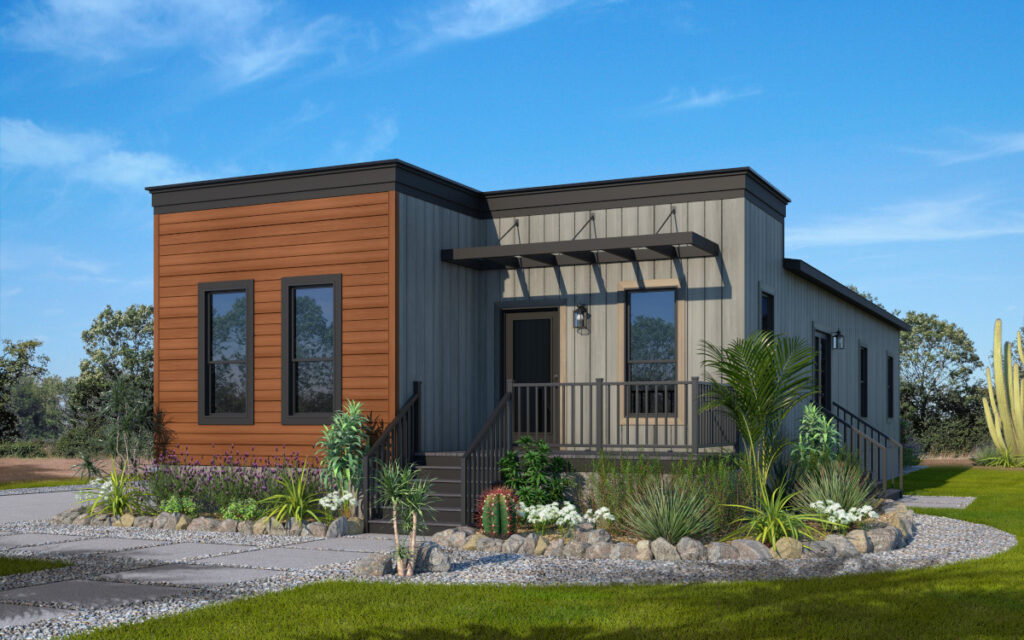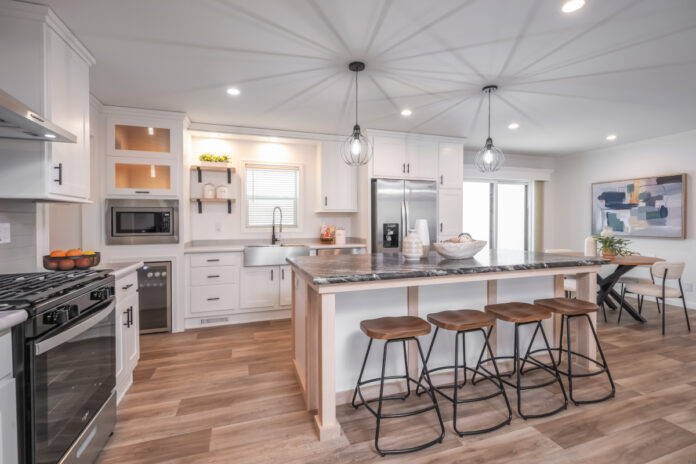Nine percent. That is the magic mark that manufactured housing has contributed to housing starts each year for at least the last decade. Still, the manufactured housing industry may finally be poised to break through that ceiling.

How? By working together.
There are some new opportunities opening up in our markets that manufacturers and retailers are starting to discover. Identifying these niche markets and learning those that are right for you can be your key to success for 2024 and beyond.
Who is Your Customer?
Doug Tollin, director of customer experience at Skyline Champion, shared some excellent points on identifying your customer.
“Understand that customers have multiple options other than manufactured housing for their housing needs,” he said. “The main competitor to a retail sales center is not the manufactured housing retail sales center down the road but the site-built alternative, apartment living, existing home sales, and living with relatives, for example.
“Each market is different. Understanding who the largest competitor of the home shoppers is will allow the retail centers to know how to develop their unique marketing strategy,” he said.
Knowing that some buyers might not visit a street retailer location, but would be interested in the same house if it was in a community is changing how some retailers sell.

Selling a Total Package
There are several channels by which manufactured homes make it to the customer. For so many years, street retailers sold homes despite the difficulty of having to help customers find land or a community, as well. Likewise, when a customer visits a community they want to know where they can buy a home to go in that vacant homesite. Many retailers sell land-home packages, especially on acreage, and we feel more will come. With site-built sales slowing down, more developers have land that needs to be developed and are having to get creative about how they bring in homes.. They are now starting to discover the factory-built advantage.
Competing with the Build-to-Rent Market
With the rise in interest rates making it harder to get financing, site builders have been turning to building new home communities that are all rentals. Single-family site built rental homes built in 2022 reached over 69,000, with many more townhome and condo communities also being built to take advantage of this demand. Tollin said he feels renters, for the most part, do not care about the method of construction used to complete their living space. This becomes a value-added to the developer or owner of a project. Suppose a “build-to-rent community” can complete its project in 30 percent less time and with 13 percent less cost and keep the community looking as attractive as they had ever imagined. In that case, the developer can generate rent revenue more quickly, reduce costs, and mitigate many risk factors. Many BTR clients are investors, not builders. Offsite construction simplifies the process for those not interested in becoming a builder.
Cavco has also become focused on this market and has started Cavco In-Neighborhood. This new division is dedicated to providing turn-key homes established in select communities and developments. Bryan Rogers is a regional vice president for the effort, and already is causing a stir in the manufactured housing community. The “diffusions of innovation,” Rogers said, is a concept his team is following to help explain how new ideas, products, and technologies are adopted and applied in different ways. By working with developers to create new community type where homes are sited and ready to be occupied in a goal of two weeks, Rogers shared that “We can offer an alternative to site-built housing. If we can capture the interest of those early adopters and gain 16 perenct of the housing market, our world will change.”
People like Bryan and Doug will change the housing world, and being a part of that is exciting.
Is this a possible dream? Of course, it is! Our industry has the resources to build, finance, insure, and sell our homes so we can genuinely offer that turn-key solution.
More on the Turn-key Process
Many consumers are concerned that we are only selling a home, and that they will have to arrange all of the partnerships needed to get the home completed. Most of us in the industry know this isn’t the case, but again, in many cases, we haven’t done a great job telling our story.
In some ways, buying a manufactured home is more straightforward than purchasing a site-built home. If a site builder were to build in the same community that these manufacturers will now be building in, it would take a minimum of 90 days to construct the home and probably 30 days to get the financing secured after the home is purchased, Cavco In-Neighborhood is using a two week sales time to buy and move in for land and homes that are set and move-in ready. This could indeed be the answer to the scarcity of attainable housing, particularly in the middle market. Some of the communities will be a land-lease purchase, and others will be where the land and home are sold together.
Another unique opportunity with these developments is that they are welcoming sales from retailers and Realtors®, which will give our homes renewed visibility they haven’t enjoyed in a long time, maybe ever. Our homes also present Realtors® a path to increased commissions. With the Cavco division, each development will have an onsite sales office, and retailers can bring clients to that sales office. The Cavco representative will handle the rest of that transaction, but the retailer still gets their commission.
If They Won’t Come to Us, We Need To Go To Them
I think manufactured housing is one of the most misunderstood industries in the country. When I talk to site builders and consumers, most guess what we still build are tin roof single wides, which you only find in older parks. Fortunately, that perception is changing, and companies like Cavco and Skyline Champion are doing a great job helping to show how far we have come. Both companies had a pair of homes at the International Builder’s Show and the Kitchen and Bath Industry Show in Las Vegas in February. More than 100,000 builders, developers, manufacturers, and designers attend the show every year, and it is exciting that our industry will have four complete homes for people to tour in the village setting right outside the convention center.
Cavco had a 540 square-foot small footprint home (great name!) And a 400 square-foot ADU model. The Genesis division of Skyline Champion brought a 1,493 square-foot, three-bedroom, two-bath home with a primary bedroom oasis as well as a 1,587 square-foot home with three bedrooms and two baths with a split bedroom design. These homes will feature the latest technology and finishes available in the industry and give our industry a way to show off what we can do. All of these homes are consistently decorated in a way that would compete with any site-built home, yet when a consumer visits some retail centers, they don’t get the same experience.
Do Your Homes Offer a WOW Feature?
Even big box retailers like Walmart and Target realize that consumers now expect to be wowed, no matter what the price point of the item they are selling. If you have gone into a Walmart lately, you will see that they no longer have just racks and shelves with vast amounts of clothing; they now have beautifully designed displays that offer one of each size with back stock hidden away. Likewise, consumers no longer want to buy a home with bare walls and floors in a monochromatic color scheme where they can’t visualize their grandmother’s china cabinet or other belongings; they expect model homes full of ideas like what they see every day on Pinterest or HGTV. Jennifer Jones, a general manager with Clayton Homes of Alexandria., in Louisiana., discovered that when she offered her many homes for sale, the fully furnished and decorated ones sold faster. She didn’t have to worry about moving and storing furniture and accessories when they did sell. It eliminated the nicked walls and scratched floors when furniture is moved out of a sold home. The houses started selling so quickly that she got contracts before we could finish hanging the artwork!
By knowing who your buyer is and what your retail center’s strengths and weaknesses are, it is possible to tap into one of these niche markets or find one of your own. We are excited about what the future holds for all of us!













